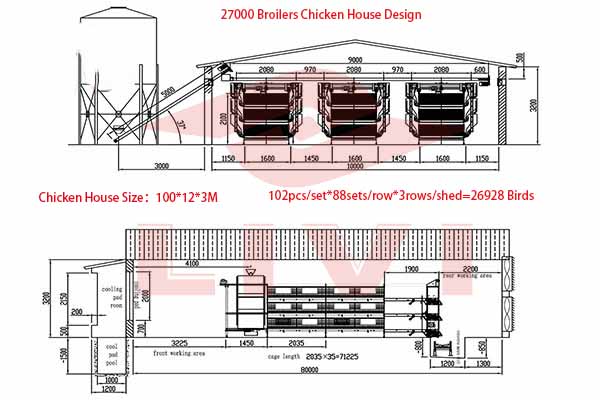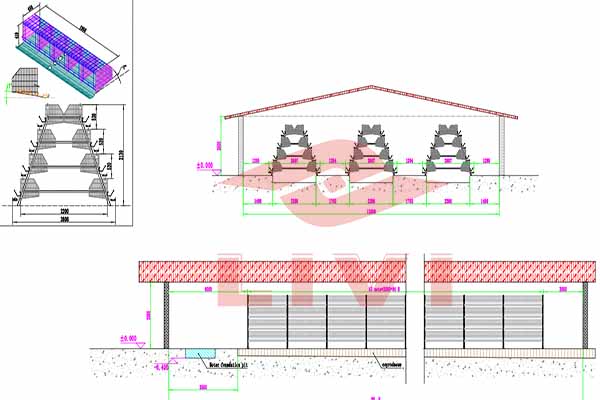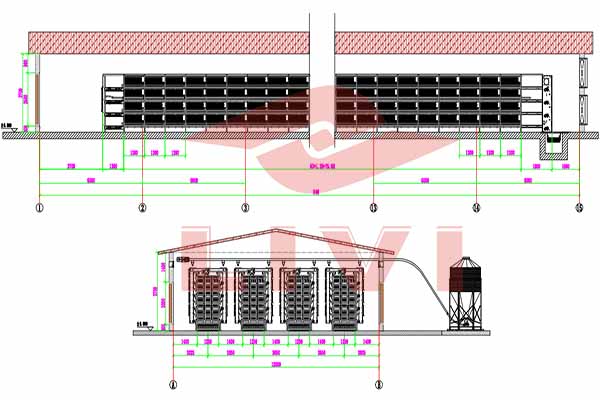The Best Chicken House Layout for Large Farms: Maximizing Efficiency and Profitability
Choosing the right layout for your chicken house is crucial for large farms looking to maximize efficiency and profitability. A well-designed chicken house not only ensures the comfort and health of your poultry but also minimizes costs and enhances productivity. In this article, we’ll explore the best chicken house layout for large farms, highlighting key factors to consider and practical solutions.
Key Considerations for Chicken House Layout
- Airflow and Ventilation
- Space Allocation
- Feed and Water Access
- Manure Management
- Health and Safety Measures
1. Airflow and Ventilation
Proper airflow is essential to prevent the buildup of heat, ammonia, and other harmful gases. A recommended ratio for airflow is 0.2 to 0.4 cubic meters per chicken per hour. A well-ventilated chicken house can lead to healthier birds and reduced risk of respiratory diseases.

2. Space Allocation
The optimal space allocation for each chicken is between 2.5 to 3.5 square feet. Ensuring adequate space reduces the risk of stress and aggression among the flock. Large farms may opt for free-range systems or aviary systems that allow chickens more room to roam, leading to improved welfare and potentially higher meat quality.

3. Feed and Water Access
Access to fresh feed and water is critical for the health and growth of your chickens. Automated feeding and watering systems are highly recommended for large farms, as they save time and labor while ensuring consistent nutrition and hydration.
4. Man ure Management
ure Management
Effective manure management is crucial for both environmental and financial reasons. Consider a solid manure removal system, such as slatted floors or a belt conveyor, to keep the house clean and hygienic. Manure can also be recycled into compost or used as fertilizer for your farm.
5. Health and Safety Measures
Implementing health and safety measures is vital to prevent disease outbreaks and maintain high flock productivity. Regular cleaning and disinfection, isolation of sick birds, and controlled access for visitors and staff are some essential steps.
Below is a table comparing the costs and benefits of different chicken house layouts for large farms:
| Layout | Cost | Benefits |
|---|---|---|
| Free-Range | High | Improved bird welfare, potential for higher meat quality |
| Conventional Battery | Low | Lower initial investment, efficient production |
| Aviary | Medium | Combination of welfare and production efficiency |
By considering these factors, you can make an informed decision about the best chicken house layout for your large farm.
Conclusion
Optimizing your chicken house layout can significantly impact your farm’s profitability and efficiency. To get the most out of your investment, consider working with professionals who specialize in farm design and equipment.
Would you like to learn more about the best chicken house layout for your large farm? Leave a comment below or contact us today to receive a free, personalized chicken house design and equipment quote from LIVI Mechanical. Let’s help you achieve the success you deserve!




